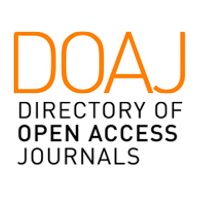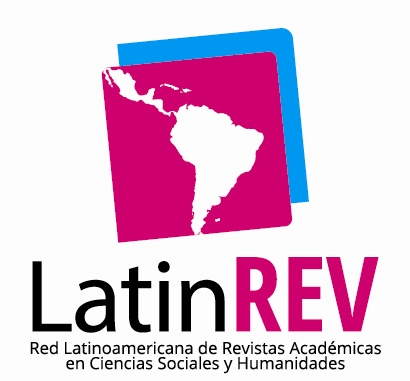¿Voluntarios dentro del aula? El rol del voluntariado en “Comunidades de Aprendizaje”
Resumo
El presente artículo estudia la influencia del voluntariado en el aprendizaje de los alumnos y alumnas cuando es ejercido dentro del aula como apoyo a las tareas de enseñanza y aprendizaje, tema particularmente relevante una vez concluido el año del voluntariado declarado por la Comisión Europea en 2011. Durante dos cursos académicos se siguió, por procedimientos cualitativos de estudio de casos, la participación del voluntariado en una Comunidad de Aprendizaje en la provincia de Barcelona. Se utilizaron observaciones continuadas, entrevistas en profundidad, grupos de discusión comunicativos y otros procedimientos de recogida de información. Todo este proceso ha permitido constatar la positiva influencia del voluntariado en el rendimiento académico de los alumnos y alumnas y, de una manera destacada, su contribución al carácter inclusivo de la escuela y a la cohesión social del entorno en que se ubica. El artículo incluye una revisión de las investigaciones llevadas a cabo sobre el voluntariado en la escuela. Los resultados obtenidos son sometidos a discusión.
Palabras Clave. Voluntariado, participación de las familias, comunidad de aprendizaje, rendimiento académico, cohesión social
Downloads
Referências
Aubert, A., Flecha, A., García, C., Flecha, R., & Racionero, S. (2008). Aprendizaje dialógico en la Sociedad de la Información. Barcelona: Hipatia.
Aydlett, L., Randolph, M., & Wells, G. (2010). “Project Panama: An International Service Project”. International Journal of Teaching and Learning in Higher Education, 22(2), 152-157.
Baggerly, J. (2006). “Service Learning with Children Affected by Poverty: Facilitating Multicultural Competence in Counseling Education Students”. Journal of Multicultural Counseling and Development, 34(4), 244-256.
Bruner. (2000). La educación, puerta de la cultura. Madrid: Visor.
Carter, D. N., & Kotrlik, J. W. (2008). “Factors related to the defelomental experiences of youth servnig as 4-H camp counselors”. Journal of Agricultural Education, 49 (2), 50-63.
Comer, J. (1984). “Home–school relationships as they affect the academic success of children”. Urban Society, 16, 323-337.
Darwen, J., & Rannard, A. G. (2011). “Student volunteering in England: a critical moment”. Education + Training, 53(2/3), 177-189.
Deslandes, R. (2006). “Designing and Implementing School, family, and Community Collaboration Programs in Quebec, Canada”. The School Community Journal, 16(1), 81-106.
Einfeld, A., & Collins, D. (2008). “The Relationships Between Service-Learning, Social Justice, Multicultural Competence, and Civic Engagement”. Journal of College Student Development, 49(2), 95-109.
Elboj, C., & Niemelä, R. (2010). “Sub-communities of Mutual Learners in the Classroom: The case of Interactive groups”. Revista de Psicodidáctica, 15(2), 177-189.
Elboj, C., Puigdellívol, I., Soler, M., & Valls, R. (2006). Comunidades de aprendizaje. Transformar la educación. Barcelona: Graó.
Fan, X., & Chen, M. (1999, April, 19-23). Parental involvement and students’ academic achievement: A meta-analysis. Paper presented at the Annual Meeting of the American Educational Research Association, Montreal, Quebec (Canada).
Flecha. (2009). “Cambio, inclusión y calidad en las comunidades de aprendizaje”. Cultura y Educación, 21(2), 157-169.
Flecha, A., Garcia, R., Gómez, A., & Latorre, A. (2009). "Participación en escuelas de éxito: una investigación comunicativa del proyecto Includ-ed”. Cultura y Educación, 21(2),183-196.
Flecha, R., & Soler, M. (2013). “Turning difficulties into possibilities: engaging Roma families and students in school through dialogic learning”. Cambridge Journal of Education,
(4), 451-465.
Freire, P. (1987). L’Educació com a pràctica de la llibertat. Vic: Eumo Editorial.
Freire, P. (1999). La educación en la ciudad (2ª ed.). Madrid: Siglo XXI.
Freire, P. (2006). Pedagogía de la tolerancia. México: Fondo de Cultura Económica.
Gatt, S., Puigdellívol, I., & Molina, S. (2010). “Mead´s Contributions to Learner´s Identities”. Revista de Psicodidáctica, 15(2), 223-238.
Ginwright, S., & Cammarota, J. (2007). “Youth activism in the urban community: learning critical civic praxis within community organizations”. International Journal of Qualitative Studies in Education, 20(6), 693-710.
Gómez, J., Latorre, A., Sánchez, M., & Flecha, R. (2006). Metodología comunicativa crítica. Barcelona: El Roure.
GOVA. (2002). Comunidades de Aprendizaje en Euskadi. Victoria-Gasteiz: Servicio central de publigaciones del Gobierno Vasco.
Habermas, J. (1987). Teoría de la acción comunicativa (Vol. I y II). Madrid: Taurus.
Hong, S., & Ho, H. Z. (2005). “Direct and Indirect Longitudinal Effects of Parental Involvement on Student Achievement: Second-Order Latent Growth Modeling Across Ethnic Groups”.
Journal of Educational Psychology, 97(1), 32-42.
Horvat, E., Weininger, E. B., & Lareau, A. (2003). “From social ties to social capital: Class differences in the relations betweens schools and parent networks”. American Educational Research Journal, 40(2), 319-351.
Huntsingeer, C. S., & Jose, P. E. (2009). “Parental involvement in children’s schooling: Different meanings in different cultures”. Early Childhood Research Quarterly, 24, 398-410.
Jeynes, W. H. (2003). “A META-ANALYSIS The Effects of Parental Involvement on Minority Children’s Academic Achievement”. Education and Urban Society, 35(2), 202-218.
Kirkhaug, B., Britt, M., Klockner, C. A., & Morch, W. T. (2013). “Association between Parental Involvement in School and Child Conduct, Social, and Internalizing Problems: Teacher Report”. Educational Research and Evaluation, 16(4), 346-361.
Knapp, A. K., & Jefferson, V. M. (2013). “Learning Toghether”. Teaching Cildren Mathematics, 19(7), 432-439.
Mead, G. H. (1973). Espíritu, persona y sociedad desde el punto de vista del conductismo social. Barcelona: Paidós.
Metz, E., McLell an, J., & Youniss, J. (2003). “Types of Voluntary Service and Adolescents’ Civic Development”. Journal of Adolescent Research, 18(2), 188-203.
Nettles, S. M., & Greenberg, B. (1990). Community Involvement and Disadvantaged Students: A Review and Annotated Bibliography, from http://www.eric.ed.gov/PDFS/ED325601.pdf
Puigdellívol, I., & Ríos, O. (2008). “El centro educativo como agente de cohesión social en contextos interculturales”. Organización y gestión educativa: Revista del Fórum Europeo de
Administradores de la Educación, 16(4), 25-30.
Sanders, M., Sheldon, S. B., & Epstein, J. (2005). “Improving Schools’ Partnership Programs in the National Network of Partnership Schools”. Journal of Educational Research &
Policy Studies, 5(1), 24-47.
Sheldon, S. B. (2003). “Linking School–Family–Community Partnerships in Urban Elementary Schools to Student Achievement on State Tests”. The Urban Review, 35(2), 149-165.
Sheldon, S. B. (2007). “Improving Student Attendance With School, Family, and Community Partnerships”. The Journal of Educational Research, 100(5), 267-275.
Simpkins, S. D., Becnel, J. N., & Eccles, J. S. (2008). “The Mediational Role of Adolescents’ Friends in Relations Between Activity Breadth and Adjustment”. Developmental Psychology,
(4), 1081-1094.
Slavin, R. E., & Madden, N. A. (2001). Reducing the Gap: Success for All and the Achievement of African-American and Latino Students. Annual Meeting of the American Educational Research Association. Retrieved from http://www.eric.ed.gov/PDFS/ED455079.pdf
Spratt, J., Shucksmith, J., & Philip, k. (2007). “Embedded yet Separate: Tensions in Voluntary Sector Working to Support Mental Health in State-Run Schools”. Journal of Education Policy, 22(4), 411-428.
Stake, R. (1998). Investigación con estudio de casos. Madrid: Morata.
Valls, R., & Kyriakides, L. (2013). “The power of Interactive Groups: how diversity of adults volunteering in classroom groups can promote inclusion and success for children of vulnerable minority ethnic populations”. Cambridge Journal of Education, 43(1), 17-33.
Vygotski, L. S. (1978). El desarrollo de los procesos psicológicos superiores. Barcelona: Crítica.
Wallace, C., & Florian, P. (2009). “More Participation, Happier Society? A Comparative Study of Civil Society and the Quality of Life”. Social Indicators Research, 93(2), 255-274.
Wanat, C. L. (2010). “Challenges Balancing Collaboration and Independence in Jeynes, W. H. (2003). “A META-ANALYSIS The Effects of Parental Involvement on Minority Children’s Academic Achievement”. Education and Urban Society, 35(2), 202-218.
Kirkhaug, B., Britt, M., Klockner, C. A., & Morch, W. T. (2013). “Association between Parental Involvement in School and Child Conduct, Social, and Internalizing Problems: Teacher Report”. Educational Research and Evaluation, 16(4), 346-361.
Knapp, A. K., & Jefferson, V. M. (2013). “Learning Toghether”. Teaching Cildren Mathematics, 19(7), 432-439.
Mead, G. H. (1973). Espíritu, persona y sociedad desde el punto de vista del conductismo social. Barcelona: Paidós.
Metz, E., McLell an, J., & Youniss, J. (2003). “Types of Voluntary Service and Adolescents’ Civic Development”. Journal of Adolescent Research, 18(2), 188-203.
Nettles, S. M., & Greenberg, B. (1990). Community Involvement and Disadvantaged Students: A Review and Annotated Bibliography, from http://www.eric.ed.gov/PDFS/ED325601.pdf
Puigdellívol, I., & Ríos, O. (2008). “El centro educativo como agente de cohesión social en contextos interculturales”. Organización y gestión educativa: Revista del Fórum Europeo de
Administradores de la Educación, 16(4), 25-30.
Sanders, M., Sheldon, S. B., & Epstein, J. (2005). “Improving Schools’ Partnership Programs in the National Network of Partnership Schools”. Journal of Educational Research & Policy Studies, 5(1), 24-47.
Sheldon, S. B. (2003). “Linking School–Family–Community Partnerships in Urban Elementary Schools to Student Achievement on State Tests”. The Urban Review, 35(2), 149-165.
Sheldon, S. B. (2007). “Improving Student Attendance With School, Family, and Community Partnerships”. The Journal of Educational Research, 100(5), 267-275.
Simpkins, S. D., Becnel, J. N., & Eccles, J. S. (2008). “The Mediational Role of Adolescents’ Friends in Relations Between Activity Breadth and Adjustment”. Developmental Psychology,
(4), 1081-1094.
Slavin, R. E., & Madden, N. A. (2001). Reducing the Gap: Success for All and the Achievement of African-American and Latino Students. Annual Meeting of the American Educational Research Association. Retrieved from http://www.eric.ed.gov/PDFS/ED455079.pdf
Spratt, J., Shucksmith, J., & Philip, k. (2007). “Embedded yet Separate: Tensions in Voluntary Sector Working to Support Mental Health in State-Run Schools”. Journal of Education Policy, 22(4), 411-428.
Stake, R. (1998). Investigación con estudio de casos. Madrid: Morata.
Valls, R., & Kyriakides, L. (2013). “The power of Interactive Groups: how diversity of adults volunteering in classroom groups can promote inclusion and success for children of vulnerable minority ethnic populations”. Cambridge Journal of Education, 43(1), 17-33.
Vygotski, L. S. (1978). El desarrollo de los procesos psicológicos superiores. Barcelona: Crítica.
Wallace, C., & Florian, P. (2009). “More Participation, Happier Society? A Comparative Study of Civil Society and the Quality of Life”. Social Indicators Research, 93(2), 255-274.
Wanat, C. L. (2010). “Challenges Balancing Collaboration and Independence in Jeynes, W. H. (2003). “A META-ANALYSIS The Effects of Parental Involvement on Minority Children’s Academic Achievement”. Education and Urban Society, 35(2), 202-218.
Kirkhaug, B., Britt, M., Klockner, C. A., & Morch, W. T. (2013). “Association between Parental Involvement in School and Child Conduct, Social, and Internalizing Problems: Teacher Report”. Educational Research and Evaluation, 16(4), 346-361.
Knapp, A. K., & Jefferson, V. M. (2013). “Learning Toghether”. Teaching Cildren Mathematics, 19(7), 432-439.
Mead, G. H. (1973). Espíritu, persona y sociedad desde el punto de vista del conductismo social. Barcelona: Paidós.
Metz, E., McLell an, J., & Youniss, J. (2003). “Types of Voluntary Service and Adolescents’ Civic Development”. Journal of Adolescent Research, 18(2), 188-203.
Nettles, S. M., & Greenberg, B. (1990). Community Involvement and Disadvantaged Students: A Review and Annotated Bibliography, from http://www.eric.ed.gov/PDFS/ED325601.pdf
Puigdellívol, I., & Ríos, O. (2008). “El centro educativo como agente de cohesión social en contextos interculturales”. Organización y gestión educativa: Revista del Fórum Europeo de
Administradores de la Educación, 16(4), 25-30.
Sanders, M., Sheldon, S. B., & Epstein, J. (2005). “Improving Schools’ Partnership Programs in the National Network of Partnership Schools”. Journal of Educational Research & Policy Studies, 5(1), 24-47.
Sheldon, S. B. (2003). “Linking School–Family–Community Partnerships in Urban Elementary Schools to Student Achievement on State Tests”. The Urban Review, 35(2), 149-165.
Sheldon, S. B. (2007). “Improving Student Attendance With School, Family, and Community Partnerships”. The Journal of Educational Research, 100(5), 267-275.
Simpkins, S. D., Becnel, J. N., & Eccles, J. S. (2008). “The Mediational Role of Adolescents’ Friends in Relations Between Activity Breadth and Adjustment”. Developmental Psychology,
(4), 1081-1094.
Slavin, R. E., & Madden, N. A. (2001). Reducing the Gap: Success for All and the Achievement of African-American and Latino Students. Annual Meeting of the American Educational Research Association. Retrieved from http://www.eric.ed.gov/PDFS/ED455079.pdf
Spratt, J., Shucksmith, J., & Philip, k. (2007). “Embedded yet Separate: Tensions in Voluntary Sector Working to Support Mental Health in State-Run Schools”. Journal of Education Policy, 22(4), 411-428.
Stake, R. (1998). Investigación con estudio de casos. Madrid: Morata.
Valls, R., & Kyriakides, L. (2013). “The power of Interactive Groups: how diversity of adults volunteering in classroom groups can promote inclusion and success for children of vulnerable minority ethnic populations”. Cambridge Journal of Education, 43(1), 17-33.
Vygotski, L. S. (1978). El desarrollo de los procesos psicológicos superiores. Barcelona: Crítica.
Wallace, C., & Florian, P. (2009). “More Participation, Happier Society? A Comparative Study of Civil Society and the Quality of Life”. Social Indicators Research, 93(2), 255-274.
Wanat, C. L. (2010). “Challenges Balancing Collaboration and Independence in Home- School Relationships: Analysis of Parents’ Perceptions in One District”. The School Community
Journal, 20(1).
Downloads
Publicado
Edição
Seção
Licença
Política de acceso abierto
Esta revista proporciona un acceso abierto inmediato a su contenido, basado en el principio de que ofrecer al público un acceso libre a las investigaciones ayuda a un mayor intercambio global de conocimiento.
Licencia
Revista REXE "Revista de Estudios y Experiencias en Educación" de la Facultad de Educación, Universidad Católica de la Santísima Concepción, está distribuido bajo una Licencia Creative Commons Atribución 4.0 Internacional.






